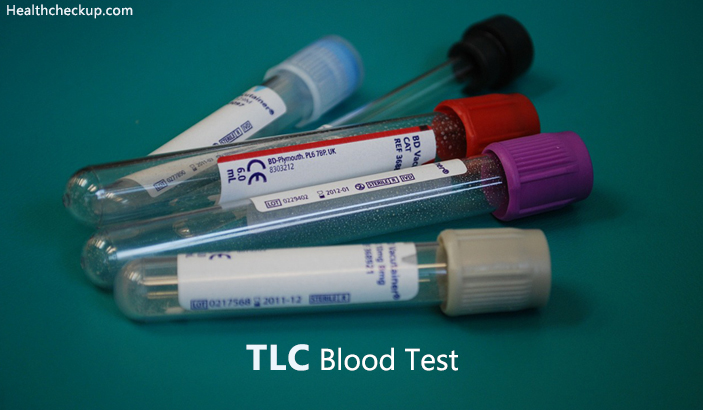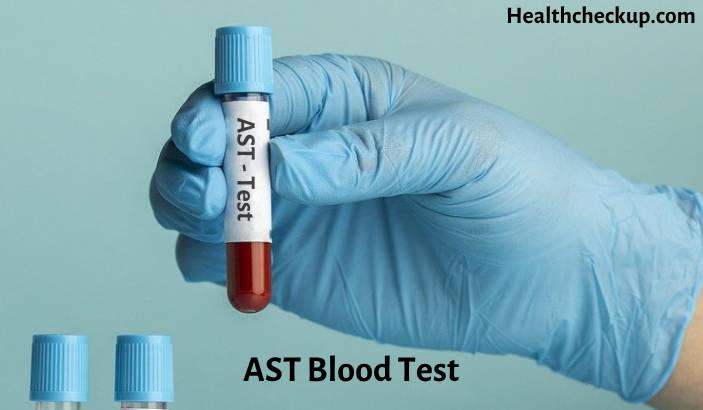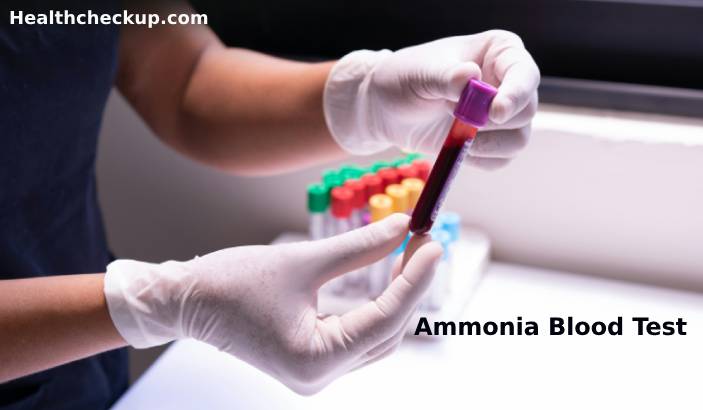The TLC blood test is one of the most common blood test ordered by doctors, and TLC stands for ‘Total Leukocyte Count’. Leukocytes are white blood cells which are important components of the blood. The main role of white blood cells or leukocytes is to fight infection and keep the body healthy. Leukocytes are essential for the overall well-being of the body.
The TLC blood test forms a part of the complete blood test which determines other values such as complete blood count (CBC), platelet count, red blood cells count (RBC), and hemoglobin percentage. A DLC test may be ordered along with a TLC test. DLC stands for Differential Leukocyte Count and is done to measure the percentage of each type of white blood cell or leukocyte in the body.
What is a TLC Blood Test?
TLC test means the test is done to determine the number of white blood cells in the blood. The WBC count helps determine the body’s capacity to fight diseases.
The normal range for TLC is considered to be between 4000 to 11000 cells/cubic millimeter of blood. A decrease in the TLC count is referred to as leukopenia, and it will cause a decline in the body’s ability to fight diseases. An increase in the TLC count is known as leukocytosis, and it is a condition in which the body produces more WBCs than normal. Leukocytosis is common among people who have an acute infection or illness and in newborn infants.
This test is ordered by the doctor to confirm a diagnosis or to check if the treatment for a particular disease is working well for you.
What are the Different Types of White Blood Cells (WBCs) and their Function?
The WBCs or leukocytes are white colored blood cells that are manufactured in the bone marrow, and move throughout the body in the blood, continuously looking for foreign bodies or invaders such as bacteria and viruses. They are immunity cells that are continually at war with any kind of foreign invaders. When the body is in danger of any illness or infection and a particular body part is involved, the WBCs rush to the affected area to help destroy the invading bodies and protect your body against illnesses.
The WBCs account only for 1% of your blood, but they have a significant effect on the healthiness of your body. There are 5 types of WBCs, each with a different function. Below are the types of WBCs and their functions:
- Lymphocytes: These cells produce antibodies to help the body defend itself against bacteria, viruses, and other possible threats.
- Neutrophils: These are powerful leukocytes that fight and destroy bacteria and fungi.
- Basophils: These white blood cells mostly help the body combat allergies, and they alert the body to infections by secreting certain chemicals into the bloodstream.
- Eosinophils: These white blood cells too are involved in the body’s response to allergy and are responsible for destroying cancer cells and parasites.
- Monocytes: These are another set of potent white blood cells that attack and break down germs or bacteria that enter the body. These cells migrate to the organs such as the spleen, liver, lungs and the bone marrow, whichever is under attack of the harmful invading foreign bodies, and destroy them. Monocytes also help remove dead or damaged tissue and destroy cancer cells.
The average lifespan of a leukocyte is 13 to 20 days, and their lifespan in the peripheral blood is only 7 to 10 hours after they migrate from the bone marrow into the bloodstream. This is the reason why a healthy body produces around 100 billion leukocytes per day to replace the perished leukocytes.
What are the Indications for the TLC Blood Test?
As mentioned earlier, a TLC blood test helps doctors confirm a diagnosis and helps them determine the effect of the treatment for a particular disease. This test is often used by doctors to:
- Diagnose an infection
- Differentiate between an acute and chronic infection
- Identify an allergic reaction in the body
- Diagnose an inflammatory condition affecting the body
- Diagnose certain types of cancer, especially blood cancer such as leukemia or lymphoma
- Comprehend the effects of chemotherapy on the health of a person undergoing it
How to Prepare for the TLC Blood Test?
A patient is not needed to take any special precautions before undergoing a TLC blood test, but it is important to inform your doctor about any medication you take regularly, and he may ask you to stop taking certain drugs before undergoing the test as some drugs may affect the test results.
How is TLC Blood Test Performed?
A blood sample is obtained from the patient like in any other test, and the TLC is estimated either through a manual/microscopic method or through an automated method that uses an equipment called the hemocytometer.
TLC Blood Test Results Interpretation
The TLC normal range for Total Count – WBC is 4,000-11,000 cells/ cumm for all age groups and for Unisex gender. If the test results show any deviation from the TLC normal range is considered to be an indication of a disease.
TLC Normal Range For Adults
The normal reference range for adults (males and females) is as follows:
- Total leukocytes: 4.00-11.0 x 10 9/L
- Neutrophils: 2.5–7.5 x 10 9/L
- Lymphocytes: 1.5–3.5 x 10 9/L
- Monocytes: 0.2–0.8 x 10 9/L
- Eosinophils: 0.04-0.4 x 10 9/L
- Basophils: 0.01-0.1 x 10 9/L
What are the Causes of High TLC Count?
If the results of a TLC blood test show an increase in the number of WBCs, i.e., if the TLC count high when more than 11000 cells/ cubic millimeter of blood, the condition is called Leukocytosis. Leukocytosis may be caused by a number of reasons such as:
- Allergy or a severe allergic reaction in the body
- Cancer such as chronic lymphocytic leukemia or chronic myelogenous leukemia
- Bacterial or viral infections
- Rheumatoid arthritis
- Immunosuppression caused by diseases like HIV
- Inflammation caused by conditions such as rheumatoid arthritis
- Injury
- Severe physical or emotional stress
- Injury
- Pregnancy or labor
- Smoking
- Respiratory illnesses such as whooping cough or tuberculosis
- Regular use of drugs such as corticosteroids and epinephrine
What are the Causes of Low TLC Count?
If the results of a TLC test show the WBC count to be less than 4000 cells/ cubic millimeter of blood. This condition is referred to as leukopenia, and it may be caused by:
- Viral infections that temporarily disrupt the production of white blood cell production in the bone marrow
- Certain congenital disorders that are responsible for weakened bone marrow function
- Diseases that damage the bone marrow
- Autoimmune disorders such as lupus that cause the destruction of the white blood cells or the bone marrow
- Medications such as antibiotics that destroy white blood cells
- Sarcoidosis
- Aplastic anemia
- Chemotherapy or radiation therapy
- Tuberculosis
- Rheumatoid arthritis
- Infections such as malaria, dengue, and typhoid
- Malnutrition and vitamin deficiencies
How to Reduce TLC in Blood?
If you are detected with high TLC in blood, there are not many options to help reduce the high TLC. However, aiming to reduce the amount of calorie intake in a day and maintaining a healthy body weight may help reduce the high TLC. Other steps you may take to maintain a normal TLC include:
- Keeping the intake of saturated fat below 7% of your total calorie intake in a day
- Lowering the daily intake of cholesterol to less than 200 milligrams
- Limiting your sodium intake to 2400 milligrams a day
- Increasing your physical activity and exercising for a minimum of 30 minutes for 5 days a week
- Consuming fresh fruits and vegetables and increasing your intake of soluble fiber
How to Increase TLC in Blood?
If your TLC blood test values are lowered, you can work to increase the levels by:
- Including zinc in your diet
- Increasing your folic acid intake through supplements or foods rich in folic acid
- Including yogurt and selenium sources in your daily food
- Consuming green tea, as it is rich in antioxidants which supports the immune system and encourages WBC production
- Making fatty fish such as mackerel and salmon, which are rich in omega-3 fatty acids, a regular part of your diet
Medically Reviewed By

I am an experienced Medical/Scientific writer with a passion for helping people live a happy healthy life. My thirst for writing has followed me throughout the years – it is there when I wake up, lingering at the edges of my consciousness during the day, and teases me at night as I go to sleep.








